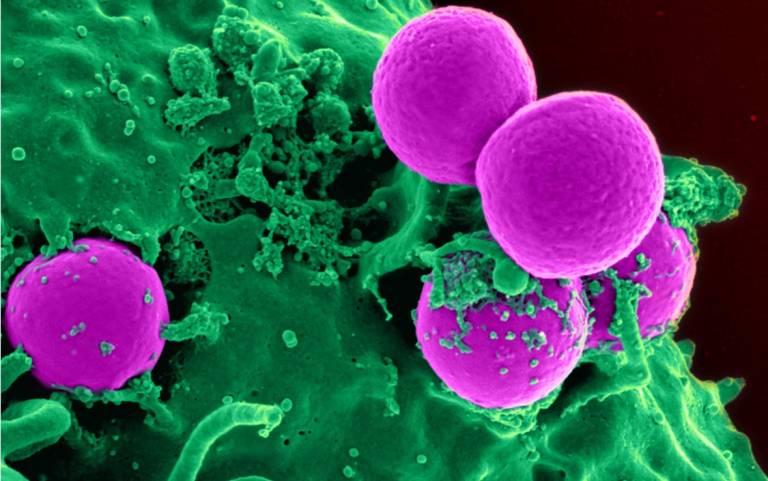A research team at University College London published its development of an antimicrobial coating which kills bacteria when exposed to light. The creation can be used to coat phones screen, keyboards, and the inside of catheters and breathing tubes for prevent the spread of diseases in hospitals and healthcare institutes.
The research, published today in Nature Communications, is the first to show a light activated antimicrobial coating successfully killing bacteria in low intensity, ambient light (300 Lux), such as that found in wards and waiting rooms to stop healthcare-associated infections (HCAIs). Previously, similar coatings needed intense light (3,000 Lux), like that found in operating theatres, to activate their killing properties.

(Image: UCL)
The new bactericidal coating is made of tiny clusters of chemically modified gold embedded in a polymer with crystal violet, a dye with antibacterial and antifungal properties.
First author, Dr. Gi Byoung Hwang (UCL Chemistry), said, "Dyes such as crystal violet are promising candidates for killing bacteria and keeping surfaces sterile as they are widely used to disinfect wounds. When exposed to bright light, they create reactive oxygen species, which in turn kill bacteria by damaging their protective membranes and DNA. This is amplified when they are paired with metals such as silver, gold and zinc oxide."
"Other coatings have effectively killed bacteria but only after exposure to UV light, which is dangerous to humans, or very intense light sources, which aren't very practical. We are surprised to see just how effective our coating is in killing both S. aureus and E. coli in ambient light, making it promising for use in a variety of healthcare environments," added Professor Ivan Parkin (UCL Chemistry), senior author and Dean of UCL Mathematical & Physical Sciences.
The team of chemists, chemical engineers and microbiologists created the bactericidal coating using a scalable method and tested how well it killed S. aureus and E. coli against control coatings and under different lighting conditions.
The bacteria-killing coating was discovered unexpectedly by the team when producing hydrogen peroxide, a relatively mild reagent used in contact lens cleaner solutions. It works by chemically attacking the cell membrane, and therefore takes longer to work on bacteria with more layers of protection.
The research was funded by the Engineering and Physical Sciences Research Council, through the Advanced Flow Technology for Healthcare Materials Manufacturing (MAFuMa) project.





 CN
TW
EN
CN
TW
EN






